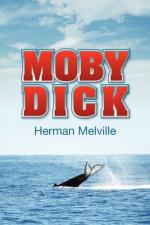|
This section contains 292 words (approx. 1 page at 400 words per page) |

|
Moby-Dick Summary & Study Guide Description
Moby-Dick Summary & Study Guide includes comprehensive information and analysis to help you understand the book. This study guide contains the following sections:
This detailed literature summary also contains Bibliography and a Free Quiz on Moby-Dick by Herman Melville.
Now admired as a masterpiece of American literature and considered one of the greatest novels of all time, Moby-Dick was published to unfavorable reviews, and its author, Herman Melville, was subsequently unable to make a living as a writer. He wrote just three more novels after Moby-Dick and then retired from literary life, working as a customs officer, writing poems, a novella, and a few short stories. Not until the 1920s were the multi-layered qualities of his epic novel fully appreciated.
Ostensibly the story of a whaling voyage as seen through the eyes of Ishmael, the book's narrator, and the account of the pursuit of a white whale, the novel is concerned with many of the issues which dominated nineteenth-century thought in America. The relationship between the land and the sea echoes the conflict between adventure and domesticity, between frontiersman and citydweller. Captain Ahab's tragic monomania, as expressed in his obsessive pursuit of the whale, is an indirect commentary on the feelings of disillusionment in mid-nineteenth-century America and on the idea that the single-minded pursuit of an ideal is both vain and self-destructive.
Highly symbolic, tightly packed with philosophical musings, and interspersed with goading questions, the novel put off many of its early readers with what was seen as a rejection of basic storytelling principles. Each time some form of narrative tension is established, the author appears to launch off into obscure ramblings. They are only arcane, of course, when the reader does not perceive the hidden meanings within these passages; modern audiences have the advantage of being more receptive to disjointed narrative techniques. As for the novel's subtexts, only a few of these require sophisticated knowledge of nineteenthcentury thought; the majority concern the big and immutable questions of life.
Read more from the Study Guide
|
This section contains 292 words (approx. 1 page at 400 words per page) |

|



